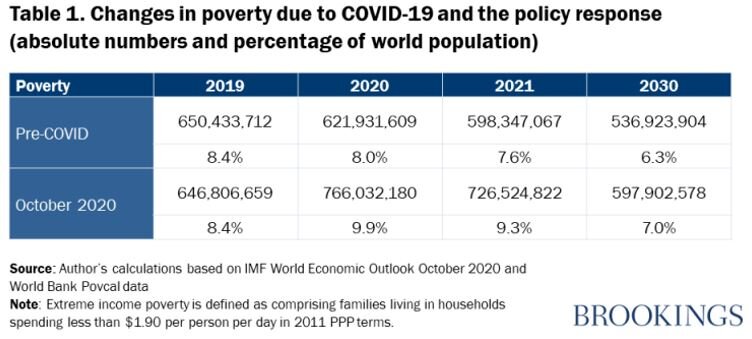Development - real world examples for IB Economics students
In the final article in his series of real world examples for IB Economics students our author, George Graves examines the topic of development. Truly understanding Economics stretches beyond the academic study of theory and concepts. As an IB Economics student, you must be able to apply what you have learned to real world contexts. This is particularly true for students taking exams in May 2022 where real world examples of economic principles will be required for your Paper 1 exam.
Below, George discusses the effect of the Covid-19 pandemic on development economics with real world examples for you to explore further. George has written a series of articles on real world examples with coverage of macroeconomics, microeconomics, and international trade. When you’re done with this article be sure to check the others out to broaden your knowledge of IB Economics.
Development and Covid-19
The Covid-19 pandemic has had disproportionately serious effects on the poorest countries of the world which is likely to be felt for many years to come.
Example 1: poverty
2019 had been a good year for poverty reduction and before the pandemic absolute poverty worldwide was projected to fall consistently over the next few years. However, as Table 1, shows there is now likely to be a large increase compared to the pre-Covid projections.
https://www.brookings.edu/blog/future-development/2020/10/21/the-impact-of-covid-19-on-global-extreme-poverty/
There will also be an increase in relative poverty corresponding to a less equal distribution of income as the lowest income groups will be the most affected by the pandemic. The World Bank estimates that the Gini coefficient in developing countries could increase by as much as 6% as a result of the pandemic.
India in particular is expected to be among the countries most affected having a large number of vulnerable people combined with a projected negative growth rate of 11%. Figure 1 shows how different countries are likely to be affected.
https://www.brookings.edu/blog/future-development/2020/10/21/the-impact-of-covid-19-on-global-extreme-poverty/
Example 2: inability to deal with the problem
Poor countries are much less able to engage in the expansionary policies that the wealthy countries are currently employing and they are trapped in a downward spiral of falling growth, falling incomes, falling tax revenues and inability to finance spending on health care and economic stimulus packages. The IMF estimates that developing countries would need to spend $2.5 trillion as an appropriate response to the pandemic, but to be able to do this they would have to borrow large sums that would exacerbate the existing debt problem that they already face. The alternative is for the wealthy countries to provide aid, but many are cutting back their aid programmes given the increased domestic spending requirements.
Example 3: development issues
Global development goals are almost certainly going to be missed as a result of the pandemic. The global recession has had a disproportionate effect on the economies of LEDCs because they specialise in a narrow range of primary products which have experienced falling demand and falling prices. This in turn leads to falling incomes and rising unemployment which forces many families to take their children out of school. This negative impact on development is compounded by the increased strain on health care systems to deal with the pandemic which reduces the medical services available for non-Covid related diseases. Without increased assistance from the developed countries recent gains in development will be lost and reversed.
Further reading
If you have found the examples presented in this article of interest then continue exploring these areas and educating yourself about real world examples of development and economics. As a starting point, you may find the following articles of interest;
COVID-19 robs children in poor countries of nearly four months of school, UN News, 29 October 2020
Revealed: The cost of the pandemic on world's poorest countries, UN News, 3 December 2020
Zambia's default fuels fears of African 'debt tsunami' as Covid impact bites, The Guardian, 25 November 2020
Continue your IB Economics revision
As you know, IB Economics is a complex subject with much to know and understand. Real world examples can help contextualise theory, so be sure to come up with a way of keeping track of the examples you come across when reading the news or in your everyday life. You can bookmark interesting articles, or create a spreadsheet that lists examples and the economic principles they demonstrate. Whatever method you choose, be sure to update it regularly and when it comes to studying for your IB Economics exams be sure to use it in your revision process.
To help you keep your study on track you can visit our IB Economics subject page to access a host of articles and tools to help you along your way. If you’re looking for support with the trickiest bits of the syllabus, be sure to pick up our IB Economics study guides. Our IB Economics range has individual guides for both SL and HL students that provide a thorough review of the syllabus along with examples of key concepts and practice questions. If you’ve got your understanding of IB Economics down and are looking for more opportunities to practice and challenge yourself before exams, then our Practice Questions for Paper 1 and Paper 2 study guide can help you become exam ready.



